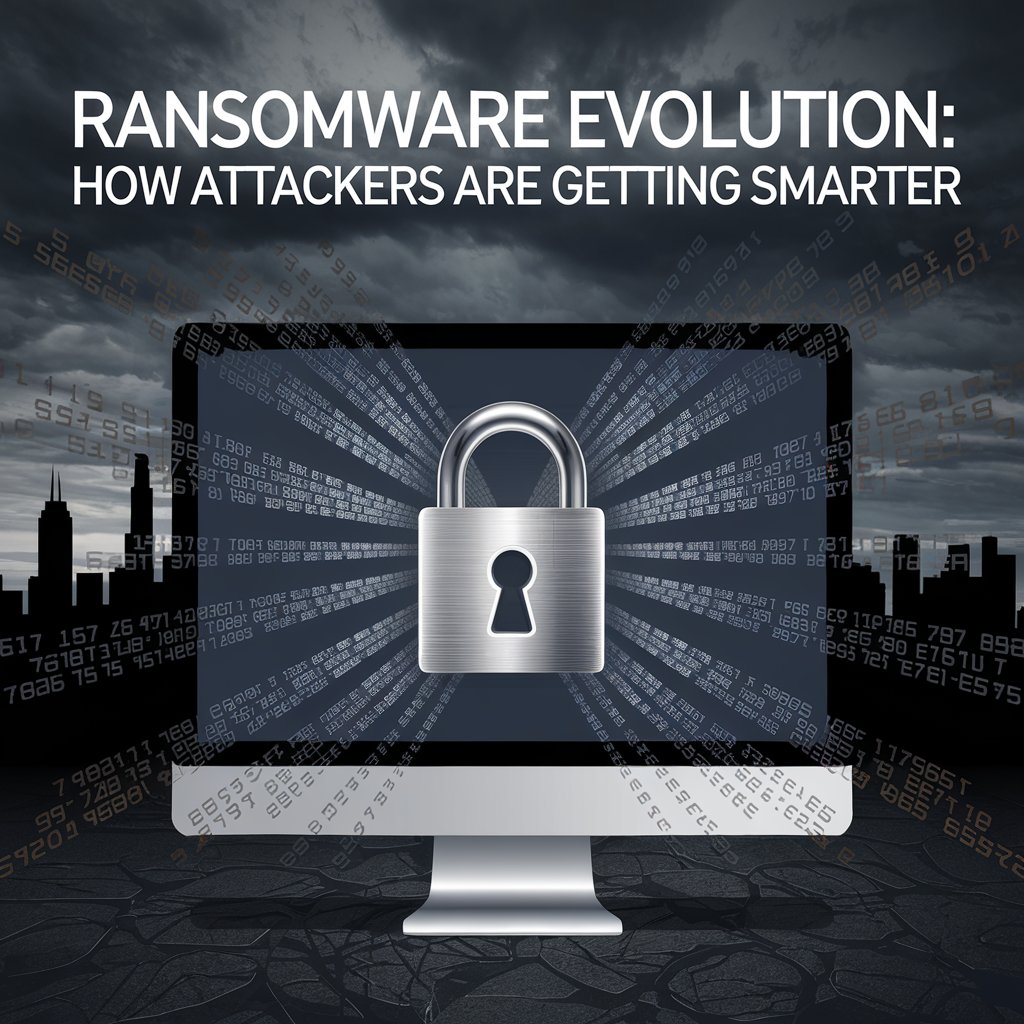
Ransomware has become a household term, but few understand the depth and evolution of this digital menace. Once a rudimentary tactic used by cybercriminals, ransomware has transformed into a sophisticated operation with organized crime syndicates at its helm. Understanding the evolution of ransomware helps us comprehend how attackers have become smarter and more resourceful over the years.
Early Days of Ransomware
In its infancy, ransomware was relatively simple. It mainly targeted individual users, locking their files with basic encryption and demanding a modest ransom for the decryption key. The goal was straightforward: make a quick profit without much effort. These attacks were often unsophisticated and easily thwarted by basic antivirus software and user awareness.
Ransomware Gets Organized
As cybercriminals realized the potential for profit, ransomware attacks became more organized. Enter Ransomware-as-a-Service (RaaS), a model where attackers could purchase or lease ransomware tools without needing technical skills. This business model revolutionized ransomware, allowing “affiliates” to conduct attacks and share profits with the ransomware developers. Suddenly, ransomware was no longer the work of isolated hackers but organized crime rings.
Targeting Corporations and Governments
A significant shift occurred when ransomware attackers began targeting corporations and government entities instead of individual users. High-profile attacks on large organizations such as healthcare systems, utility providers, and financial institutions became more frequent. The stakes were higher, and so were the ransom demands, sometimes reaching millions of dollars. The strategy was clear: attacking entities that could not afford downtime ensured a higher likelihood of receiving payment.
Advanced Encryption Techniques
As defenses improved, so did the encryption methods used by ransomware. Double and triple extortion tactics emerged, where attackers not only encrypted data but also exfiltrated it, threatening to release sensitive information publicly unless a ransom was paid. This strategy created a dual pressure point: organizations had to pay not only to regain access to their data but also to prevent data leaks.
The Rise of Sophisticated Attack Methods
Ransomware attacks have become more sophisticated with the advent of advanced technologies. Attackers now utilize AI and machine learning to better understand their targets and create more effective attack strategies. Polymorphic malware, which changes its code to avoid detection by traditional antivirus solutions, has also become a standard tool in the ransomware arsenal. These advancements make ransomware more adaptable and harder to detect and neutralize.
Targeting Critical Infrastructure
Ransomware attackers have set their sights on critical infrastructure in recent years, such as healthcare facilities, utilities, and government services. These attacks are particularly concerning as they threaten not only the financial stability of the targeted organizations but also the safety and well-being of the public. A successful attack on a hospital, for example, can disrupt patient care, leading to potentially life-threatening situations.
Social Engineering and Phishing
Phishing remains one of the most effective methods for delivering ransomware. Attackers have refined their social engineering tactics to trick even the most cautious users into clicking malicious links or downloading infected attachments. The evolution of phishing tactics now includes highly personalized spear-phishing campaigns and “phishing kits” that automate the process, making it easier for attackers to launch large-scale phishing campaigns.
Ransomware in the Cloud Era
With the widespread adoption of cloud services, ransomware attackers have adjusted their strategies accordingly. They now target cloud infrastructure, databases, and remote work environments. The shift to remote work during the COVID-19 pandemic further exposed vulnerabilities, as employees accessed corporate networks from less secure home environments. This shift has led to a surge in ransomware attacks targeting cloud services, where data is often stored without adequate backup.
Ransomware and Cryptocurrency
Cryptocurrency has played a pivotal role in the ransomware ecosystem. It provides attackers with an anonymous, hard-to-trace payment method. Bitcoin and other cryptocurrencies have become the currency of choice for ransom demands, allowing cybercriminals to evade detection and law enforcement efforts. The anonymity provided by cryptocurrency transactions makes it difficult for authorities to trace and recover ransom payments.
Defensive Strategies Against Ransomware
Organizations must implement robust defensive strategies to protect against ransomware. These strategies include regular data backups, multi-factor authentication (MFA), and adopting a Zero Trust Architecture where trust is never assumed, and verification is always required. By layering these defenses, organizations can minimize the risk of a successful ransomware attack.
Ransomware Response and Recovery
Preparation is key to responding effectively to a ransomware attack. Organizations should have a well-defined incident response plan that includes isolating affected systems, conducting forensic analysis, and collaborating with law enforcement. Recovery efforts must focus on restoring operations from backups and communicating transparently with stakeholders.
The Legal and Ethical Dilemmas
One of the biggest dilemmas facing organizations today is whether to pay the ransom. Paying the ransom may seem like the quickest way to restore operations, but it comes with significant risks, including legal ramifications and encouraging future attacks. In many jurisdictions, paying a ransom to certain cybercriminal groups can be illegal, adding a layer of complexity to the decision-making process.
Future of Ransomware
The future of ransomware is likely to involve more sophisticated attacks, targeting a broader range of sectors with increasingly advanced tactics. Global cooperation among governments, law enforcement, and private entities will be crucial in combating this evolving threat. Proactive measures, continuous education, and technological advancements will be vital to staying ahead of cybercriminals.
Conclusion
Ransomware has evolved from simple beginnings to a complex, multi-faceted threat that requires vigilance and preparedness from individuals and organizations alike. By understanding the evolution of ransomware and adopting comprehensive defensive strategies, we can better protect ourselves from this ever-present danger.
FAQs
- What are the most common types of ransomware today?
The most common types of ransomware today include encryption ransomware, which locks files and demands a ransom for decryption, and extortion ransomware, which threatens to release sensitive data unless paid. - How can organizations better prepare for ransomware attacks?
Organizations can better prepare by implementing robust cybersecurity measures, conducting regular data backups, training employees on recognizing phishing attempts, and establishing a clear incident response plan. - What should an individual do if they fall victim to ransomware?
If an individual falls victim to ransomware, they should disconnect from the internet, avoid paying the ransom, report the attack to authorities, and seek professional cybersecurity assistance to recover their data. - Are there any industries more vulnerable to ransomware than others?
Yes, industries like healthcare, finance, education, and government are more vulnerable to ransomware due to the sensitive nature of their data and the critical services they provide. - What role does user education play in preventing ransomware?
User education is crucial in preventing ransomware, as many attacks rely on human error. Training users to recognize phishing attempts and practice safe browsing habits significantly reduces the risk of ransomware infections.






